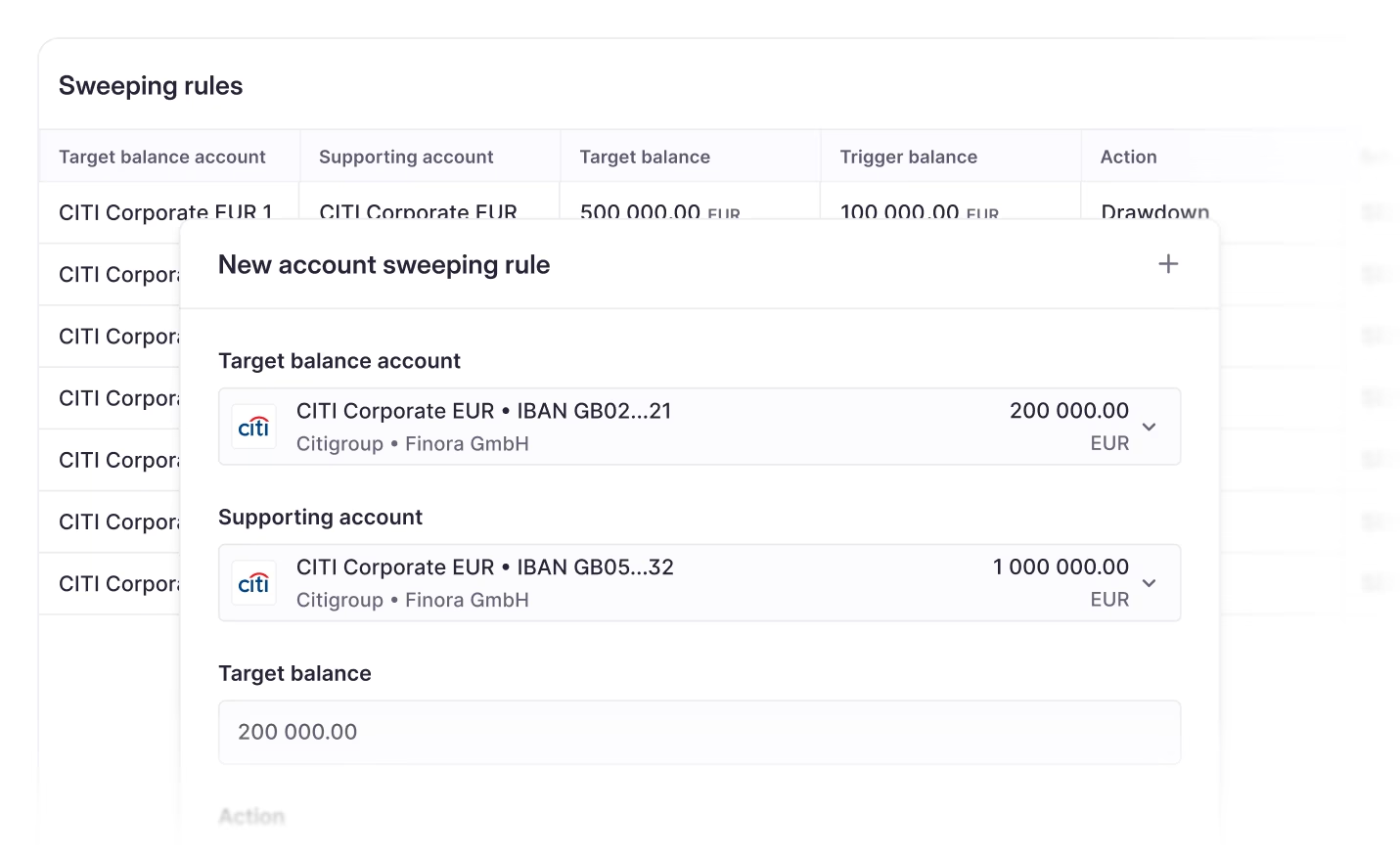Cash float
Cash float is the portion of money that is temporarily in transit or reserved to support payment operations and liquidity needs.

Introduction to cash float
Cash float represents the short-term gap between when a payment is initiated and when it fully clears or becomes available. This timing difference can occur in both outgoing and incoming payments and is a normal feature of financial operations.
Managing cash float effectively is essential for maintaining accurate visibility over available liquidity. Uncontrolled float can distort cash positions, affect forecasting accuracy, and lead to unnecessary borrowing or missed investment opportunities. By understanding how and where float occurs, finance teams can optimize working capital and ensure funds are used efficiently across the organization.
Sources of cash float
Cash float typically arises from three main sources: payments, collections, and system timing.
Payment float occurs when disbursements are initiated but not yet settled. For example, funds may have been approved and deducted from internal ledgers but have not yet left the company’s bank account.
Collection float is the delay between receiving a payment and being able to use it. This might occur when customer funds are awaiting clearance or confirmation from the bank.
System or process float stems from differences in posting times, batch processing, or time-zone delays between banks and internal systems. This type of float is common in organizations that operate across multiple banking partners or regions.
Together, these forms of float explain why the balances shown in a company’s ERP, treasury platform, and bank accounts can temporarily differ.
Challenges in managing cash float
Managing float across multiple entities and currencies can be complex. Visibility gaps often arise between book cash—the balances recorded in internal systems—and bank cash, the balances confirmed by financial institutions. These discrepancies make it harder for treasurers to determine how much cash is truly available at any moment.
Differences in settlement cycles, banking cut-off times, and payment schemes (such as SEPA, SWIFT, or Faster Payments) can further complicate control. Legacy infrastructure and manual reconciliation processes extend the lag between transaction initiation and confirmation, obscuring the company’s real-time liquidity position.
If float is not closely monitored, it can result in over-borrowing, missed investment returns, and inaccurate cash forecasts—particularly in periods of high transaction volume or during month-end close.
Best Practices for Reducing cash float
Minimizing float depends on improving visibility, speed, and automation across payment and banking processes. Leading practices include:
- Accelerating settlement: Use real-time or same-day payment schemes wherever possible to shorten clearing times.
- Integrating systems: Connect banks, ERPs, and treasury platforms to synchronize balances automatically.
- Automating reconciliation: Match payments and transactions in near real time to reduce timing gaps.
- Centralizing treasury operations: Manage liquidity centrally to coordinate payments and inflows across entities.
- Using cash concentration tools: Employ sweeping or pooling structures to offset float across accounts and regions.
These measures reduce delays between cash movements and their reflection in internal systems, giving finance teams a more accurate, up-to-date view of liquidity.
Cash float and forecasting
Float directly affects short-term cash forecasting and positioning. If book and bank balances are not aligned, forecasts may overstate or understate available cash. By quantifying and tracking float, treasury teams can adjust forecasts to reflect true availability.
Continuous monitoring of float also supports liquidity planning by identifying systemic delays in payments or collections that can be optimized over time.
How Atlar can help with cash float
Atlar provides real-time visibility into all connected bank accounts, helping finance teams reduce float and improve forecasting accuracy. By automatically synchronizing bank data with ERPs and treasury systems, Atlar removes the lag between transaction initiation, confirmation, and reconciliation.
With live balances, transaction tracking, and automated reporting, teams can see exactly where cash is held, what is in transit, and when it becomes available—turning float management into a precise, automated part of daily liquidity control.
You can unsubscribe anytime.
Further reading
See Atlar in action.
Enter your work email to watch a live product demo.


